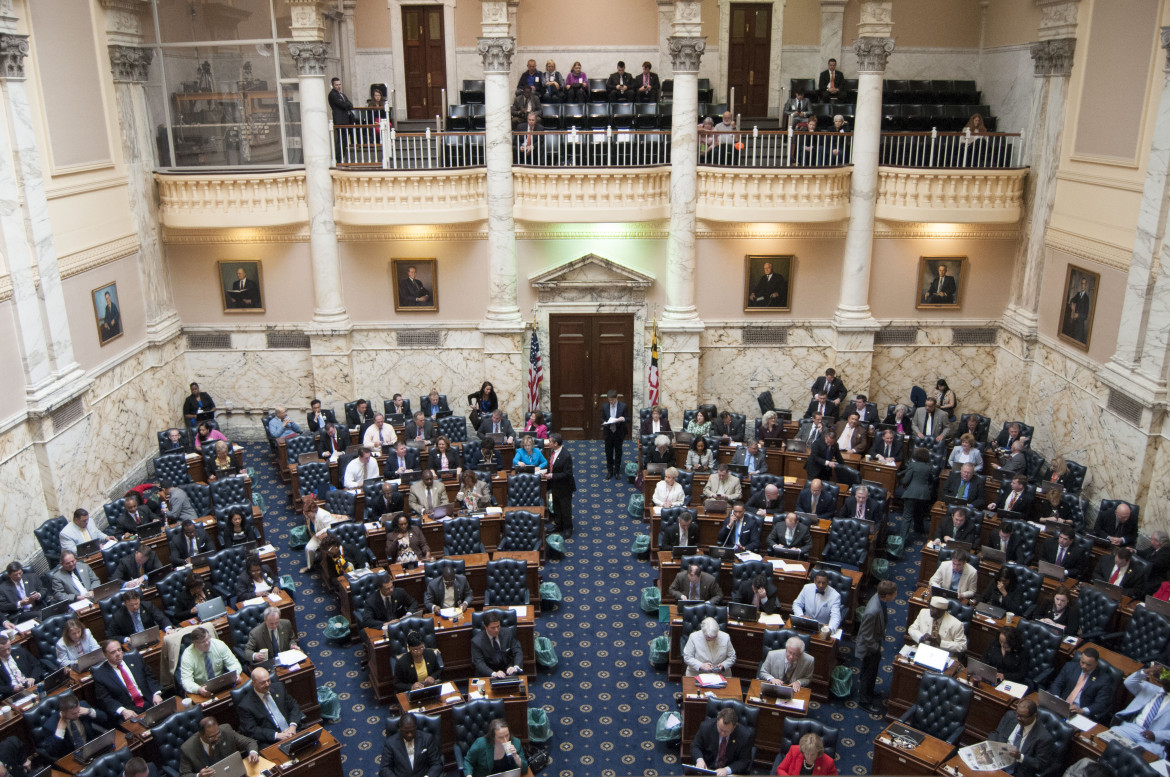Live streaming of legislative sessions would honor journalists
By Len Lazarick
I spent three hours off-and-on last Thursday watching the live gavel-to-gavel coverage on C-Span of the new U.S. House of Representatives being sworn in, including the return to power of that Baltimore girl turned San Francisco maven, Speaker Nancy D’Allesandro Pelosi.
Wednesday the new Maryland General Assembly is being sworn in and we can watch the live gavel-to-gavel of the proceedings NOWHERE.
That is because of the continued opposition of the leaders of the Maryland House of Delegates and Senate to video live streaming and archiving of their proceedings. Oh, you can listen to the audio and try to figure out who is saying what because the rules of both chambers prohibit the use of personal names. Seriously, it’s like bad radio
The U.S. House of Representatives has allowed televised coverage of floor action for 40 years, the U.S. Senate for 33 years. Sure, cameras are permitted in limited areas of the chambers of the Annapolis State House, but those videos tend to be brief and belong to the news organizations.
Committee hearings have been video live-streamed and archived for eight years, improving access to both the public and journalists covering the legislature.
MarylandReporter.com has been railing and ranting about the lack of video coverage of floor proceedings for years. At the bottom are links to some past stories.
Most of the arguments against such coverage are financial and bogus. As last year’s hearing showed, the cost of live streaming floor sessions has been cut in half. The technology is both better and cheaper — the cameras and software are all improved.
If my parish church in Columbia can afford live stream Sunday Mass, the state legislature can certainly afford to do the same for floor action.
Naming the press pit
At the same time we have the continued blockage of video of floor action, leaders are floating a proposal to name the main press room at the State House after the four journalists and an advertising person gun downed at The Capital newspaper earlier this year.
None of the slain Capital employees actually worked in the press room, which has about 14 work stations for journalists from as many as a dozen news organizations. Those of us who have desks there are honored and privileged to work in a part of the State House attached to the historic 1770s building where George Washington resigned his commission to the Congress and Thomas Jefferson and other Founding Fathers once worked.
But the press pit, as we often call it, is a historic dump. When the State House was renovated in 2008, the antique desks with typewriter wells were replaced with cheap work stations built by Maryland Correctional Enterprises. The mice are gone too.
These small and flimsy work stations with no drawers are a far cry from some of lovely wooden desks and furniture made by the same inmates and used throughout the Annapolis complex.
A plaque to honor journalists in this utilitarian room is a fairly empty gesture that does little to advance journalism or journalists.
Instead of renaming a room, how about honoring journalists by promoting more openness and transparency in government — the kind of values journalists are always fighting for.
Let’s video live stream the House and Senate proceedings, and inaugurate this new public access in honor of the Capital journalists and all the journalists who have given a lifetime of service to keep the public informed about what government is doing to them and for them.
2016: Hogan backs video of legislative sessions
Gov. Larry Hogan is apparently anxious for Marylanders to see what legislators actually do on the first floor of the State House, so he is warmly endorsing legislation that provides for live streaming and archived video of floor and voting sessions in the House of Delegates and Senate.
2016: Live from Annapolis, it’s the Maryland General Assembly — maybe some day
A conservative Republican leader and one of the most liberal Democrats in the House of Delegates are co-sponsoring legislation that would require video streaming of all sessions of the House and Senate and their committees, including voting sessions.
2015: Some more transparency in Annapolis: Senate committees video live stream hearings
The legislature has taken another small step for transparency in its proceedings this year. Senate committees are now video live streaming their hearings online, and saving them for later viewing. That includes the Executive Nominations Committee which streamed its very first hearing Monday night.

MarylandReporter.com is a daily news website produced by journalists committed to making state government as open, transparent, accountable and responsive as possible – in deed, not just in promise. We believe the people who pay for this government are entitled to have their money spent in an efficient and effective way, and that they are entitled to keep as much of their hard-earned dollars as they possibly can.

